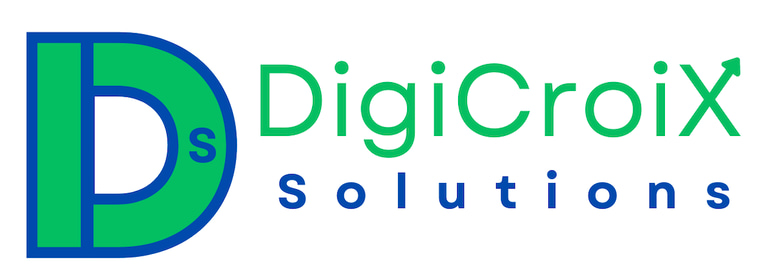How to Turn Website Visitors Into Booked Patients with Strategic CTAs
Most clinics are losing leads due to poor call-to-action (CTA) design. Learn how to convert website visitors into bookings with compelling, strategically placed CTAs. DigiCroiX specializes in UX and CTA enhancements that boost engagement.
Vishwa Raval
6/30/20255 min read


Understanding the Role of CTAs in Patient Conversion
Call-to-actions (CTAs) are essential components of any effective healthcare website, particularly for clinics aiming to transform visitors into booked patients. These prompts guide users toward taking specific actions, such as scheduling an appointment or requesting additional information. A well-crafted CTA not only clarifies the next step in the user journey but also fosters a sense of urgency and encourages engagement. For medical practices, the stakes are high—every visitor represents a potential patient, making strategic CTAs vital to conversion rates.
The importance of clear and compelling CTAs cannot be overstated. They serve as signposts that guide prospective patients through the often complex journey of navigating healthcare options. Effective CTAs should be concise and action-oriented, using verbs that inspire immediate action, such as "Book Now," "Contact Us," or "Schedule Your Visit." By placing these CTAs strategically throughout the website, clinics can create a seamless user experience that encourages visitors to take the desired actions, ultimately leading to increased appointment bookings.
However, many clinics encounter common pitfalls that result in ineffective CTAs, significantly hindering their conversion potential. Overwhelming visitors with too many CTAs can create confusion and indecision, leading to a diminished likelihood of engagement. Additionally, vague language or poorly designed buttons may fail to capture attention, further complicating the conversion process. It is crucial for healthcare providers to ensure that each CTA is not only visually prominent but also clearly articulates the benefit to the user, thereby enhancing the overall user experience and maximizing conversion opportunities.
In summary, mastering the art of CTAs is integral to converting website visitors into booked patients. By understanding the nuances of effective CTAs and avoiding common missteps, clinics can significantly improve patient engagement and ultimately increase their conversion rates.
Elements of an Effective Call-to-Action
Creating an effective call-to-action (CTA) is vital for clinics seeking to convert website visitors into booked patients. Several critical elements contribute to the success of CTAs, each playing a distinct role in ensuring that they resonate with the target audience.
Firstly, the wording of the CTA is essential. Words should be clear, concise, and direct, prompting immediate action. Effective phrases such as “Book Your Appointment Today” or “Schedule a Free Consultation” convey a sense of urgency and encourage users to act without hesitation. Additionally, using action verbs can help galvanize visitors toward the desired outcome. It's important to tailor the language to reflect the clinic's voice and personality, making it relatable to potential patients.
Design plays a crucial role in the effectiveness of a CTA. It should stand out visually on the webpage, utilizing contrasting colors and strategic placement to draw attention. Larger buttons with ample white space often improve click-through rates. Moreover, the design should be mobile-responsive, considering a significant portion of users access clinics' websites via smartphones and tablets.
Placement also matters significantly; CTAs should be positioned where they are easily visible and accessible, especially within the folds of the website or at the conclusion of engaging content. Utilizing multiple CTAs throughout the page can capture attention without overwhelming visitors. It is beneficial to have CTAs positioned at the beginning, middle, and end of content, guiding users seamlessly toward booking an appointment.
Lastly, incorporating elements of urgency or incentives can greatly enhance the efficacy of CTAs. Phrases such as “Limited Spots Available” or offering a special discount for new patients can motivate visitors to make immediate decisions. Overall, by refining the wording, design, and placement of CTAs while incorporating urgency or incentives, clinics can significantly improve their conversion rates, transforming visitors into booked patients.
Strategic Placement of CTAs on Your Website
The strategic placement of Calls to Action (CTAs) on a clinic’s website is essential for converting visitors into booked patients. Effective CTAs guide users towards desired actions, significantly enhancing engagement and conversion rates. Key areas for placing CTAs include landing pages, blog posts, and contact forms, each serving a distinct purpose in the user journey.
Landing pages are often the first interaction prospective patients have with your clinic’s website. Therefore, incorporating CTAs prominently on these pages can greatly impact the visitor's decision-making process. A well-placed CTA on a landing page should be highly visible and clearly articulate the next step. For example, a button that invites users to "Schedule a Consultation" will be more effective than a generic statement. Utilizing contrasting colors and concise, action-oriented language can enhance visibility and conversion rates.
Incorporating CTAs within blog posts also presents an opportunity to connect with readers after they engage with informative content. As users scroll through a blog, they may find themselves more receptive to scheduling an appointment or inquiring about services. Positioning a CTA at both the beginning and end of a blog post creates multiple touchpoints for readers, encouraging them to take action at various stages of their engagement.
Additionally, the placement of CTAs in contact forms is crucial in reducing friction during the appointment scheduling process. Ensuring that CTAs like “Send Request” or “Confirm Appointment” are easily accessible and visible within these forms can streamline user experiences and positively influence conversion rates.
To inform strategic placement of CTAs, it is vital to analyze user scrolling behavior using data analytics tools. Understanding how visitors navigate your website can provide insights into optimizing CTA locations, ultimately leading to higher conversion rates and an increase in booked patients.
Case Studies and Success Stories
Numerous clinics have demonstrated success in transforming website visitors into booked patients by effectively implementing strategic calls to action (CTAs). One exemplary case is a dental practice in California that revamped its website to incorporate user-friendly CTAs prominently displayed on each page. The clinic utilized clear language and compelling design elements, enticing visitors to engage with their services. As a result, the practice reported a remarkable 40% increase in appointment bookings within just six months of the new CTA implementation. This transformation not only enhanced their online presence but also significantly improved patient acquisition rates.
Similarly, a multi-specialty clinic in New York adopted a tailored approach to their CTAs by analyzing user behavior and preferences. By employing various CTAs such as “Schedule Your Free Consultation” or “Chat with Us Now,” they were able to cater to differing visitor needs. This data-driven strategy led to a 35% boost in lead generation and a corresponding rise in scheduled appointments. The clinic's leadership attributed this success to their ability to address patient queries in real-time and provide seamless scheduling options.
Moreover, a small physiotherapy clinic in Texas saw the benefits of integrating an online booking system directly linked to their CTAs. By minimizing friction in the patient journey and facilitating immediate booking upon expressing interest, they experienced a 50% increase in patients booking services online. This case highlights the potential ROI of implementing strategic CTAs tailored to a clinic's specific audience. Such success stories emphasize the tangible benefits that clinics can reap by adopting effective conversion strategies. The examples provided serve not only as benchmarks but also as a source of inspiration for medical practices aiming to enhance their patient acquisition strategies.
Get in Touch
Book your free consultation today and let's create a strategy to elevate your success!


Address
94 Shree Nagar Apartment, Sola Road, Naranpura, Ahmedabad, Gujarat, India 380063
6706 Fulton Avenue, Burnaby, BC, Canada V5E 3H1
Phone
+91 88497 12474
Quick Links
© 2025. All rights reserved.
Useful Links
Engagement
Subscribe
+91 88497 12474
